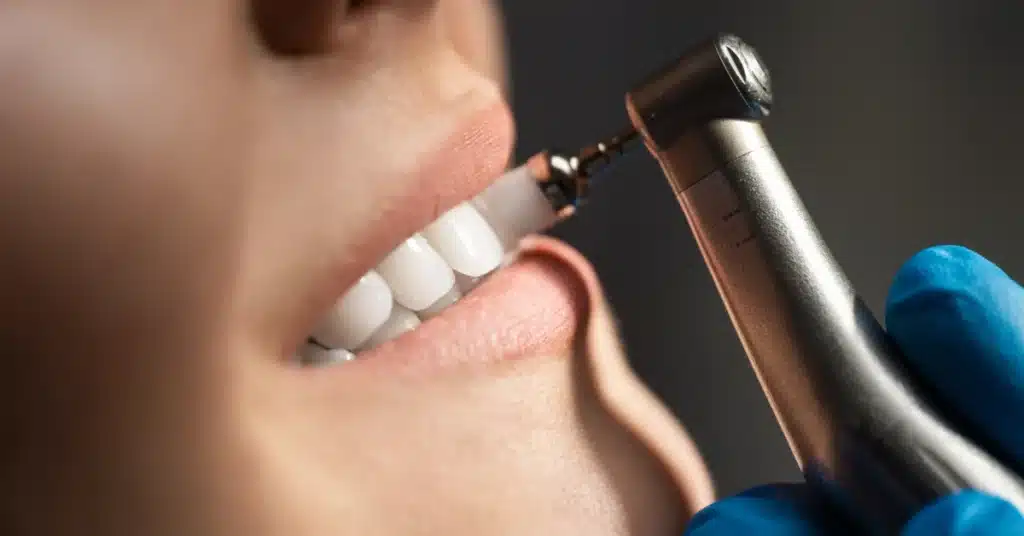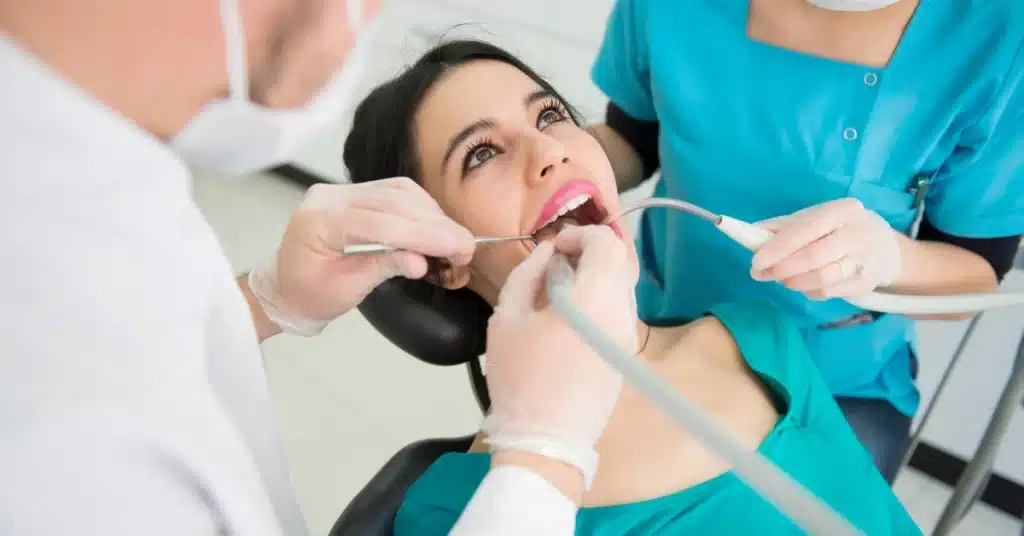Maintain a Healthy Smile with Expert Care in Henderson & Las Vegas, NV
Regular dental cleanings are essential for maintaining a healthy, bright smile and preventing serious dental issues such as gum disease, cavities, and bad breath. At Comprehensive Dental Care in Henderson, NV, we offer three types of professional cleanings tailored to your specific oral health needs.
Our experienced dentists and hygienists use advanced techniques to ensure a comfortable, thorough cleaning, helping you achieve optimal dental health.


Why Are Dental Cleanings Important?
Regular dental cleanings are more than just keeping your smile bright—they are essential for maintaining long-term oral health. Visiting a dentist in Henderson & Las Vegas for routine cleanings helps prevent cavities, gum disease, and other serious dental issues that could lead to costly treatments. Here are some key benefits of staying on top of your dental cleanings:
✔ Removes plaque & tartar buildup
✔ Prevents cavities & gum disease
✔ Keeps your breath fresh
✔ Enhances your smile’s appearance and & promotes overall health
Types of Dental Cleanings We Offer
We provide three levels of cleanings based on your oral health condition:
1. Routine Dental Cleanings (Twice a Year Cleanings)
Best for: Patients with good oral health who need regular maintenance.
Routine cleanings are performed every six months to remove plaque, tartar, and surface stains.
As part of our general dentistry services, these cleanings are essential for preventing long-term dental issues and maintaining overall oral health. During your visit, we will:
- Thoroughly clean your teeth above and below the gum line
- Polish your teeth to remove stains
- Floss between teeth to remove lingering debris
- Examine your oral health and provide preventive care recommendations
Why It’s Important:
Regular dental cleanings prevent more serious oral health issues and help maintain a bright, healthy smile. Not sure if it’s time for y
2. Advanced Dental Cleanings (Debridement Cleaning)
Best for: Patients who haven’t had a cleaning in a long time or have significant plaque buildup.
If it’s been years since your last dental visit, a standard cleaning may not be enough. In these cases, we recommend an advanced debridement cleaning to:
- Remove heavy tartar deposits
- Use ultrasonic tools for deep plaque removal
- Prepare your gums and teeth for further treatment if needed
After the debridement, we conduct a thorough assessment to create a personalized treatment plan for ongoing oral health maintenance.
Who Needs It?
✔ Those with excessive plaque or tartar buildup
✔ Patients who haven’t seen
3. Periodontal Cleanings (Deep Cleaning for Gum Health)
Best for: Patients with gum disease or deep gum pockets.
If gum disease is present, a periodontal cleaning (scaling and root planing) is necessary to:
- Remove bacteria and plaque from deep gum pockets
- Smooth the tooth roots to prevent bacteria buildup
- Control and prevent the progression of periodontal disease
How Often Is It Needed?
Patients with moderate to severe gum disease typically require periodontal cleanings every 3-4 months to maintain gum health and prevent further complications.
In some cases, advanced periodontal treatments like Perioscopy may be recommended for a minimally invasive, highly effective approach to treating gum disease.
Benefits:
✔ Prevents tooth loss & gum recession
✔ Reduces inflammation & infection
✔ Helps restore gum health
What to Expect During Your Dental Cleaning
Our gentle and experienced dentist in Henderson ensures that your visit is comfortable and stress-free. Here’s what you can expect:
1. Comprehensive Dental Exam:
We check your teeth, gums, and overall oral health.
2. Deep Plaque & Tartar Removal:
Specialized tools remove harmful buildup from your teeth and gums.
3. Deep Cleaning & Polishing:
Your teeth are cleaned and polished to remove stains and enhance shine.
4. Flossing & Fluoride Treatment (If Needed)
We finish with professional flossing and an optional fluoride application for extra protection.
Regular dental cleanings not only keep your teeth looking great but also play a crucial role in preventing cavities, gum disease, and other oral health issues. By following these essential steps, our team ensures a comfortable and thorough cleaning experience. Don’t wait until problems arise—maintaining a consistent cleaning schedule is the key to long-term oral health. Ready for your next visit? Let our dentists in Henderson & Las Vegas, NV, help you keep your smile bright and healthy!
Why Choose Comprehensive Dental Care in Henderson?
Choosing the right dental provider is essential for maintaining long-term oral health. At Comprehensive Dental Care in Henderson, we go beyond routine cleanings by offering personalized care, cutting-edge technology, and a patient-first approach. Here’s why our patients trust us for their dental care:
✔️ State-of-the-Art Technology – We use the latest dental tools for safe, efficient cleanings.
✔️ Experienced, Caring Team – Our skilled hygienists and dentists prioritize your comfort and oral health.
✔️ Personalized Treatment Plans – Every cleaning is tailored to your specific needs.
✔️ Convenient Henderson Location – Easy scheduling and a friendly atmosphere!
Your smile deserves the best care, and our team is dedicated to providing a stress-free, comfortable experience at every visit. Whether you’re coming in for a routine cleaning or specialized treatment, you can count on us for exceptional service and long-term results. Ready to experience the difference? Schedule your visit today!

Schedule your Dental Cleaning in Henderson & Las Vegas Today!
Ready to keep your smile healthy and bright? Don’t wait—schedule your professional dental cleaning today!
📞 Call us at (702) 919-6206
📧 Email us at [email protected]
💡 New patients welcome! Experience expert care at Comprehensive Dental Care in Henderson, NV.
Frequently Asked Questions
We understand that dental cleanings come with many questions, whether it’s your routine check-up or a more advanced procedure. Below, we’ve compiled the most common questions about different types of dental cleanings to help you better understand what to expect.
Routine Dental Cleaning FAQs
Are dental cleanings painful?
No, routine dental cleanings are gentle and painless. If you have sensitive gums, let your hygienist know, and they will take extra care to ensure your comfort.
What does preventive care include?
Preventive care typically includes:
✔ Professional teeth cleaning
✔ Dental exams
✔ X-rays (if needed)
✔ Personalized oral hygiene recommendations
How long does a dental cleaning take?
Most cleanings take 30 to 60 minutes, depending on the amount of plaque buildup and your specific dental needs.
Advanced Dental Cleaning FAQs
How is advanced dental cleaning different from a regular cleaning?
Unlike routine cleanings, advanced cleanings target hardened plaque and tartar buildup that can contribute to gum disease and inflammation.
Who needs advanced dental cleaning?
Patients who have:
✔ Not had a dental visit in a long time
✔ Heavy plaque and tartar buildup
✔ Bleeding gums, bad breath, or gum sensitivity
What are the benefits of advanced dental cleaning?
✔ Removes stubborn tartar to prevent gum disease
✔ Reduces oral bacteria for fresher breath
✔ Restores oral health and prevents complications
Periodontal Cleaning FAQs
How often is periodontal cleaning needed?
If you have gum disease, periodontal maintenance cleanings are typically recommended every 3-4 months to prevent further infection.
What are the benefits of periodontal cleaning?
✔ Removes bacteria and plaque from deep gum pockets
✔ Prevents tooth loss and gum recession
✔ Supports long-term gum health and stability
Is periodontal cleaning different from regular dental cleaning?
Yes! Periodontal cleanings go beyond the surface by targeting gum pockets and tooth roots to remove harmful bacteria, while routine cleanings focus on plaque and tartar above the gumline.
💡 Still have questions? Our team is here to help! Contact us today to schedule your professional dental cleaning in Henderson and keep your smile healthy. 🦷✨



